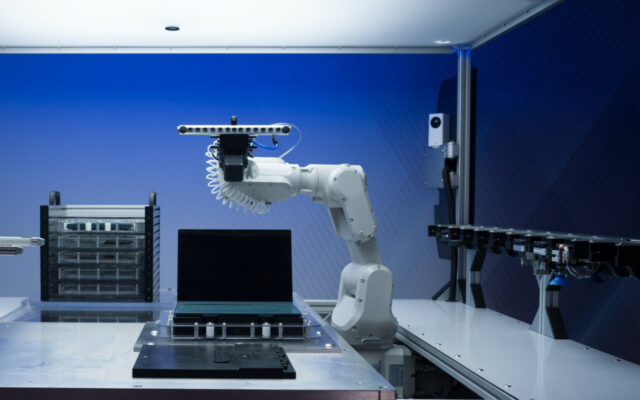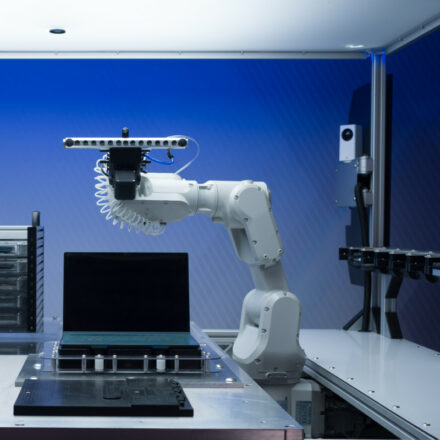Imagine a future where we don’t simply discard used electronics. Rather, we harvest individual components for a second, third or even fourth life. Once the device itself is truly at the end of life, we refurbish and recycle it to incorporate these same materials into next-generation laptops, monitors or phones. It’s a future where nothing goes to waste, and we dramatically reduce the mountain of electronics discarded every year – more than 57 million tons, globally, to be exact. Not only is technology dematerialized, but also the materials we use fuel a robust circular economy, thereby, reducing the need for new, raw materials.
Last year, we introduced Concept Luna, our breakthrough sustainable PC design, which illustrates our vision of how we can reduce waste and emissions, reuse materials and achieve next-level innovation. Our Experience Innovation Group engineers have worked over the last year to further refine the modular design of Concept Luna, eliminating the need for adhesives and cables, and minimizing the use of screws. These refinements make it easier to repair and dismantle a system. Concept Luna could dramatically simplify and accelerate repair and disassembly processes, making components more accessible and expanding opportunities for reuse.
It can take recycling partners more than an hour to disassemble a PC with today’s technology, held together with screws, glues and various soldered components. With our evolved Concept Luna design, we’ve reduced disassembly time to mere minutes. We even commissioned a micro-factory to guide our design team, resulting in a device that robots can quickly and easily take apart.
By marrying Concept Luna’s sustainable design with intelligent telemetry and robotic automation, we’ve created something with the potential to trigger a seismic shift in the industry and drive circularity at scale. A single sustainable device is one thing, but the real opportunity is the potential impact on millions of tech devices sold each year and optimizing the materials in those devices for future reuse, refurbishment or recycling.
The telemetry we added to Concept Luna also provides the opportunity to diagnose the health of individual system components to help ensure nothing goes to waste. Because the way customers use their technology varies, not all components reach end-of-life at the same time. People working from home, for example, may use external components, such as keyboards and monitors. The laptop’s keyboard and monitor have barely been used, even when the motherboard is ready to be replaced. Our Concept Luna evolution can equip and connect individual components to telemetry to optimize their lifespans. At its simplest, it’s akin to how we maintain our vehicles: we don’t throw away the entire car when we need new tires or brakes.
Our ongoing work with Concept Luna brings us closer to a future where more devices are engineered with a modular design. The exciting addition of robotics and automation serve as a catalyst to accelerate efficient device disassembly, measure component health and remaining usability, and better understand which components can be reused, refurbished or recycled – so nothing goes to waste. This vision has broad and profound implications for us, our customers and the industry at large, as we work together to reduce e-waste.
These are the explorations that inspire our team of engineers, passionate sustainability experts and designers to continue to evolve Concept Luna. And while Concept Luna is “just a concept” right now, it is a long-term vision for how we achieve an even greater business and societal impact through circular design practices. As we make strides toward achieving our Advancing Sustainability goals, we will continue to innovate, push design boundaries, solicit feedback and rethink business models. Driving breakthrough advancements and shaping a more sustainable future for all is what Concept Luna is about. I am honored to be a part of this journey.


